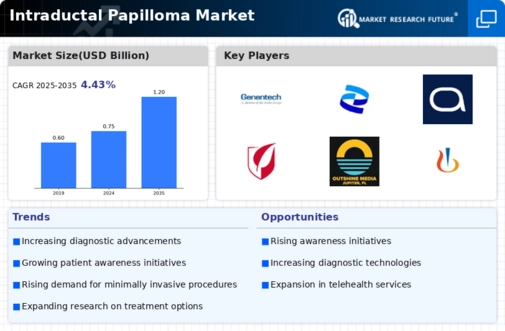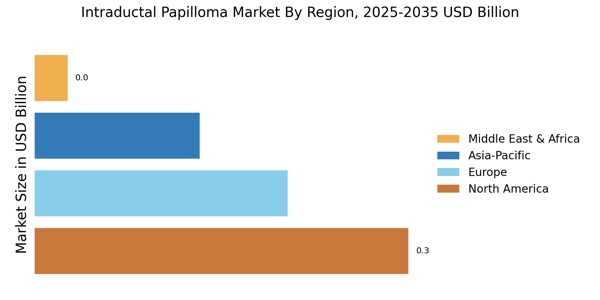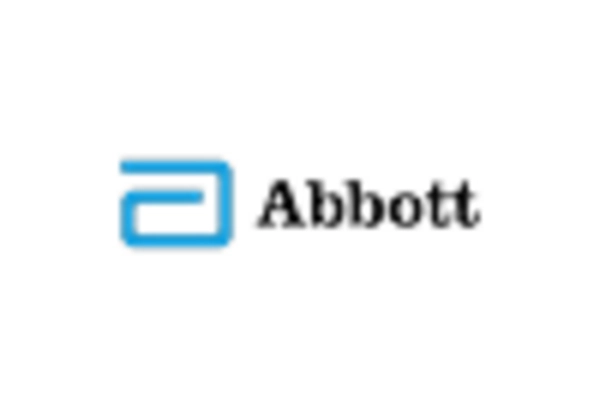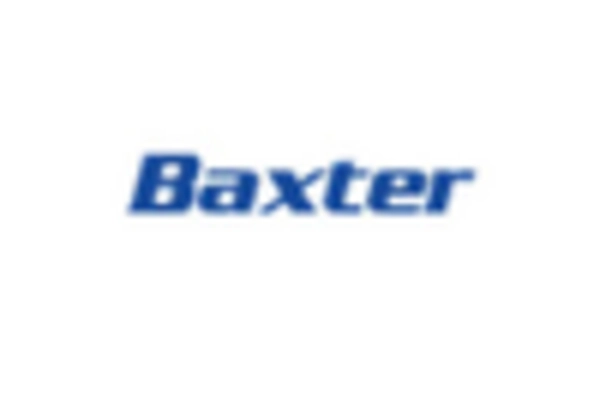Rising Healthcare Expenditure
Rising healthcare expenditure is a critical driver for the Intraductal Papilloma Market. As countries allocate more resources to healthcare, there is an increased focus on women's health issues, including breast conditions like intraductal papilloma. This financial commitment facilitates the development of new diagnostic and treatment options, thereby enhancing patient access to care. Moreover, higher healthcare spending often correlates with improved healthcare infrastructure, which can lead to better screening and treatment outcomes. Consequently, the Intraductal Papilloma Market stands to benefit from this trend, as investments in healthcare translate into greater availability of services and technologies.
Advancements in Diagnostic Technologies
Technological advancements in diagnostic methodologies are significantly influencing the Intraductal Papilloma Market. Innovations such as high-resolution imaging techniques and molecular diagnostics have improved the accuracy of intraductal papilloma detection. For instance, the introduction of digital mammography and ultrasound has enhanced the ability to identify these lesions at earlier stages. This shift towards more precise diagnostic tools is likely to increase the number of cases identified, thereby driving market growth. Furthermore, as healthcare systems adopt these advanced technologies, the Intraductal Papilloma Market may witness a surge in demand for related services and products, reflecting a broader trend towards improved patient outcomes.
Increased Research and Development Activities
Increased research and development activities are propelling the Intraductal Papilloma Market forward. With a growing emphasis on understanding the pathophysiology of intraductal papilloma, pharmaceutical and biotechnology companies are investing in R&D to develop novel therapies. This focus on innovation is likely to yield new treatment options that could enhance patient care and outcomes. Furthermore, collaborations between academic institutions and industry players are fostering a conducive environment for breakthroughs in this field. As R&D efforts intensify, the Intraductal Papilloma Market may experience a surge in new products and therapies, ultimately benefiting patients and healthcare providers alike.
Increasing Incidence of Intraductal Papilloma
The rising incidence of intraductal papilloma is a notable driver in the Intraductal Papilloma Market. Recent studies indicate that the prevalence of this condition has been on the rise, particularly among women aged 30 to 50. This increase may be attributed to various factors, including lifestyle changes and enhanced screening practices. As awareness grows, more individuals are seeking medical attention, leading to a higher diagnosis rate. Consequently, this trend is likely to stimulate demand for diagnostic tools and treatment options within the market. The Intraductal Papilloma Market is thus positioned to expand as healthcare providers respond to the growing need for effective management strategies.
Growing Demand for Minimally Invasive Procedures
The growing preference for minimally invasive procedures is reshaping the Intraductal Papilloma Market. Patients increasingly favor treatments that offer reduced recovery times and lower risks of complications. Techniques such as ductoscopy and targeted excision are gaining traction, as they align with patient desires for less invasive options. This trend is further supported by clinical evidence suggesting that minimally invasive approaches can be as effective as traditional surgical methods. As healthcare providers adapt to these preferences, the Intraductal Papilloma Market is likely to expand, with a focus on developing and promoting less invasive treatment modalities.


















Leave a Comment